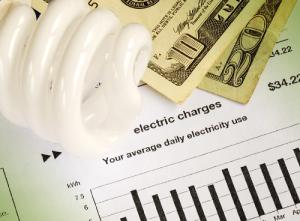Consumer Survey
Steve Mitnick has authored five books on the economics, history, and people of the utilities industries. While in the consulting practice leadership of McKinsey & Co. and Marsh & McLennan, he advised utility leaders. He led a transmission development company and was a New York Governor’s chief energy advisor. Mitnick was an expert witness appearing before utility regulatory commissions of six states, D.C., FERC, and in Canada, and taught microeconomics, macroeconomics, and statistics at Georgetown University.
In May, the Bureau of Labor Statistics released the microdata for the Consumer Expenditure Survey for 2023 Mid-Year. The Consumer Expenditure Survey is the gold standard for understanding the expenditure patterns of American households. Since 1984, it engages thousands of households each year in detailed reporting of every expenditure on all goods and services including their payment of electric bills.

This table illustrates the differences between households for which their electric bills are the highest percentage of their total expenditures and households for which their electric bills are the lowest percentage of their total expenditures. The comparison shows that households with the highest electric bills percentage have far less income on average, are generally older and have fewer earners, and are more likely to be headed by a female, to be headed by a black individual, and to reside in rural America. They are less likely than average to reside in California and more likely than average to reside in Texas and Florida.
This table should be used for comparison purposes only. The microdata is very helpful for understanding these kinds of differences. But they do not represent the statistical weighting that the Bureau of Labor Statistics will carefully apply when it publishes its annual tables for the Consumption Expenditure Survey.
For example, this table has the overall average of electric bills as a percentage of total expenditures at 3.4 percent for the four thousand households. After excluding high-tail and low-tail households in the distribution. When properly-weighted, the annual tables will typically show the overall electric bills percentage for all American households at around 2.3 to 2.5%.
. . .
Extreme tails of the distribution at the upper end, comprising three hundred and eighty five households, and lower end, comprising three hundred and eighty five households as well, were excluded from the analysis.
Reference Person is defined by the Bureau of Labor Statistics as “the first member mentioned by the respondent [in the Consumer Expenditure Survey] when asked to ‘start with the name of the person or one of the persons who owns or rents the home.’”


